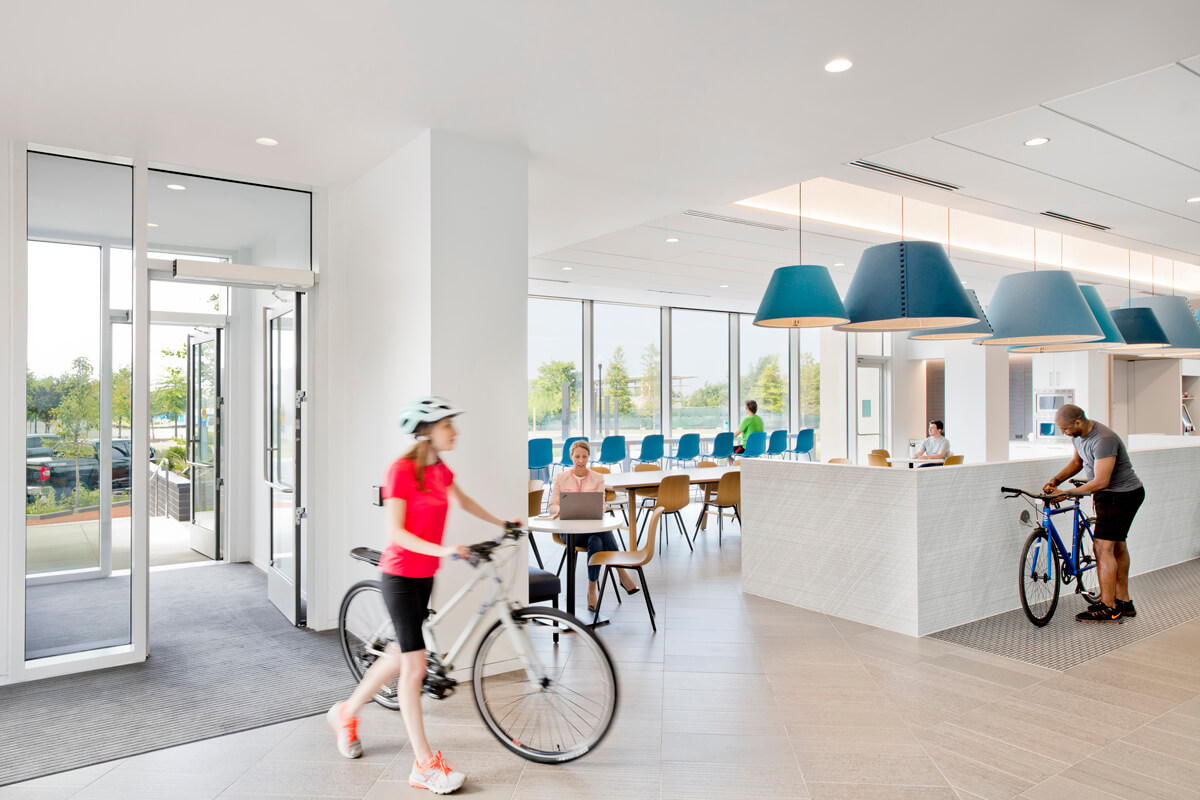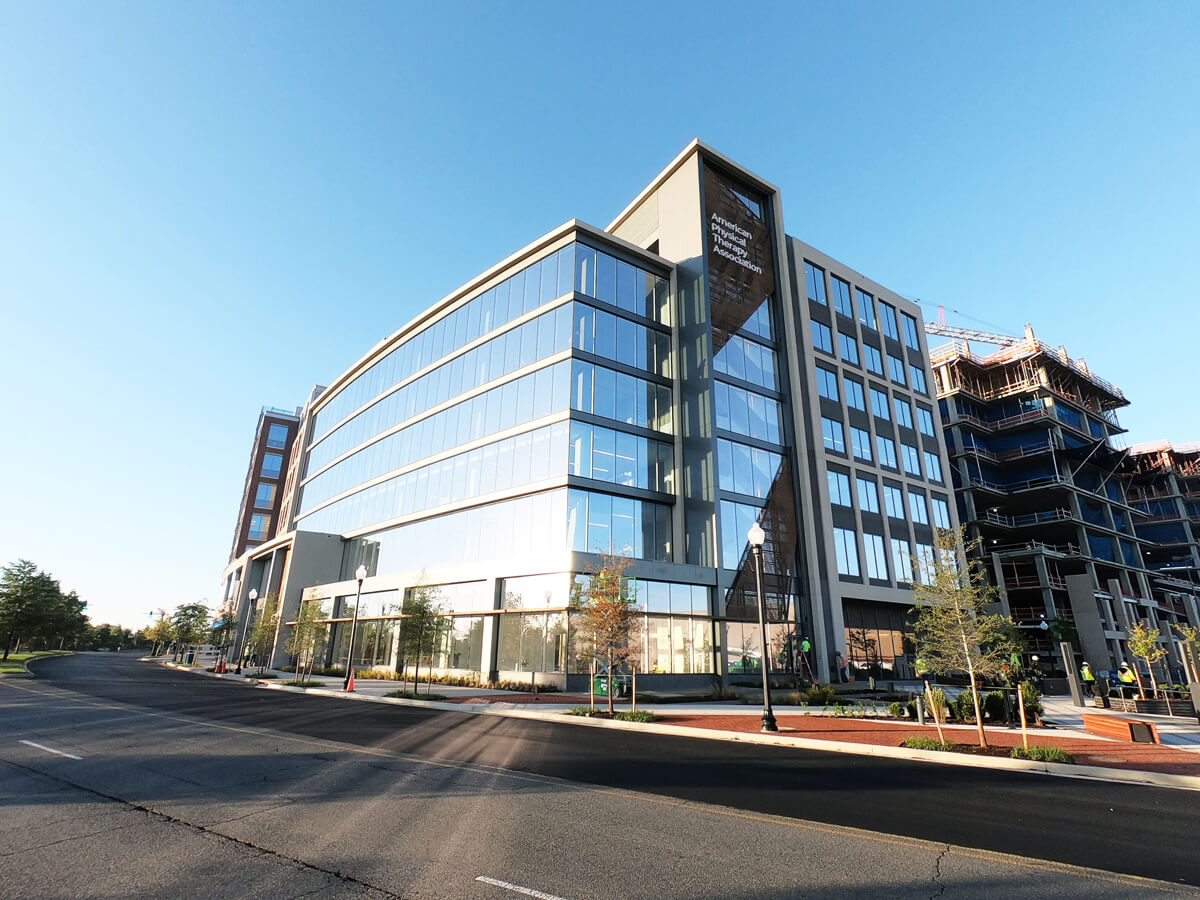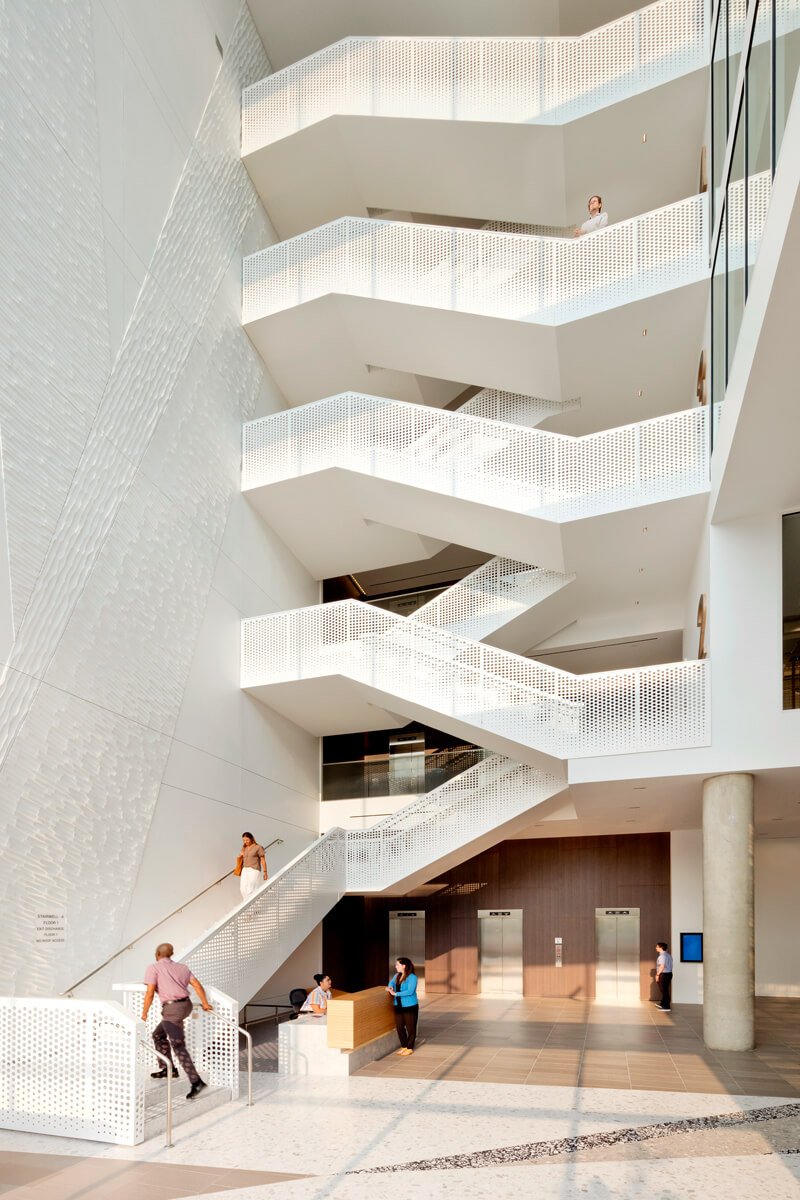I am writing this text at the end of the day. The app that measures my activity indicates that I stayed inactive for 4 hours and 6 minutes today. That’s a great result. I usually have a hard time getting below eight.
It’s no secret that movement in the modern world is a scarce commodity. The massive use of cars, the many hours spent in the corporate chair, relaxing in front of your favorite TV show, not to mention the pandemic that has locked us indoors for months on end – all of this means that to move, you have to specifically plan to do so. But what if we were to reverse this train of thought? What if we made the movement appear „on its own” by accident?
That’s the approach taken by the American Physical Therapy Association (APTA), which designed its new headquarters to use architectural solutions to optimize movement and influence the mobility of visitors to the building.
„APTA believes that movement differentiates and defines a productive workplace and team performance,” says CEO Justin Moore. „Movement drives engagement, participation, and collaboration to support an organization’s greatest asset – its people and their pursuit of health and purpose at work.”
Can a building make people want to move more? Looking at the American solution, the possibility exists.
Location
For many people, the moment of moving from home to the workplace and vice versa is the only opportunity to embrace a daily dose of physical activity. However, there is one condition. This movement should take place using alternative means of transport such as bicycle, public transport or even just walking.
APTA took this into account when choosing the location. The headquarters were built in an area rich in bicycle trails and close to the subway. No need for a car!

Bicyclists are on top
To encourage the use of bicycles for commuting, APTA included not only paths to the building, but also special ramps to bring bicycles inside, a spacious bike garage located near the meeting area, and service stations throughout the property.
Thanks to this approach people who use bicycles are not only able to use the premises of the building, but they are in a way privileged users of the building.
At this point, it is worth mentioning that the availability of locker rooms, showers, and the entire sports center for employees has also been thought of. All this in order to encourage going to work to combine it with physical activity.
Stairway to health
What does it take to make people want to take the stairs themselves? To the sixth floor? Thanks to the location of staircases in attractive places of the building, using them you can admire the panorama of the city, which encourages not only visitors but also the employees to relax while moving. The staircase entrance itself has been placed right next to the elevators to make it even easier for people to make the „go or take the elevator” decision.
The spacious staircase is a hallmark of the building. For additional motivation, each floor has been marked. All this to encourage movement.
Space
The availability of large meeting spaces encourages joint activities, teamwork, and cooperation between departments. All this is not only inside the building but also on the terraces (including one on the roof).
Doesn’t it sound like an ideal place to work?
The solutions have been appreciated in the local market.
The building will soon be LEED Silver certified and received the best FitWel rating (3 stars), signaling that this is a workplace that supports human health.
It remains to design as many similar projects as possible in Poland, which is my wish for myself and the readers.





